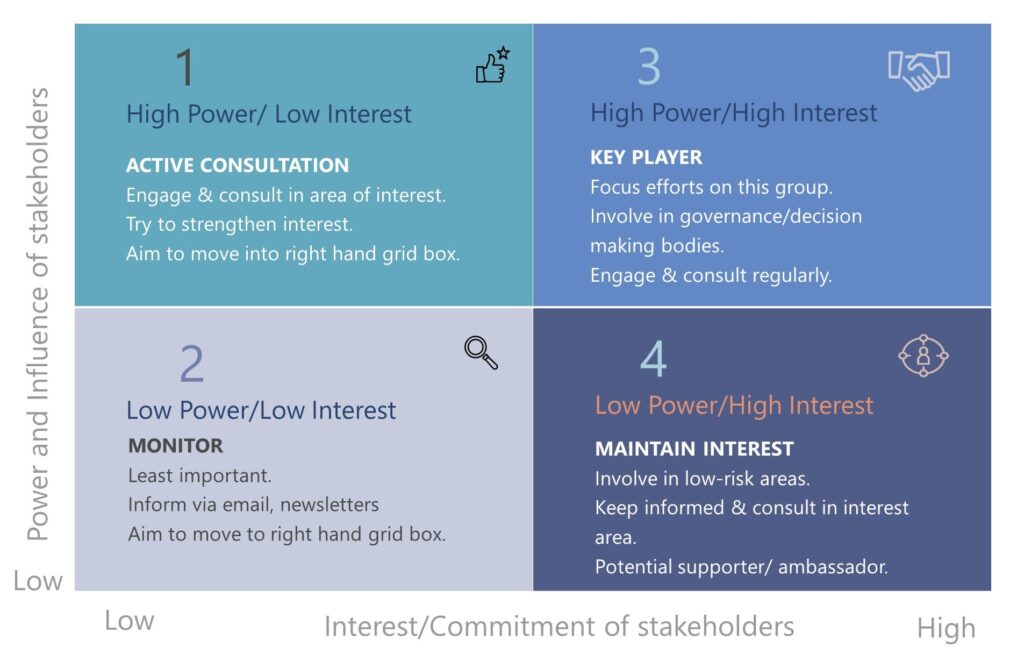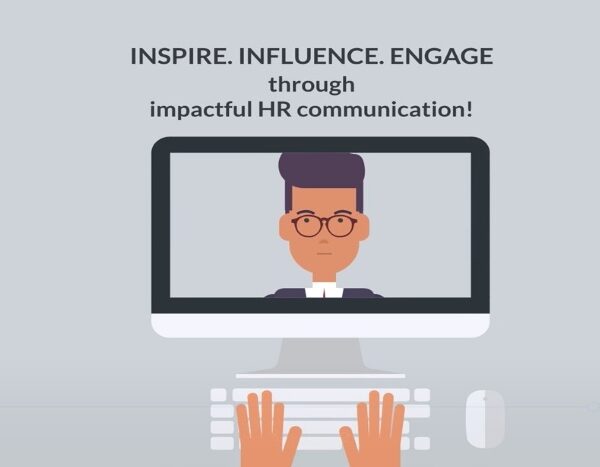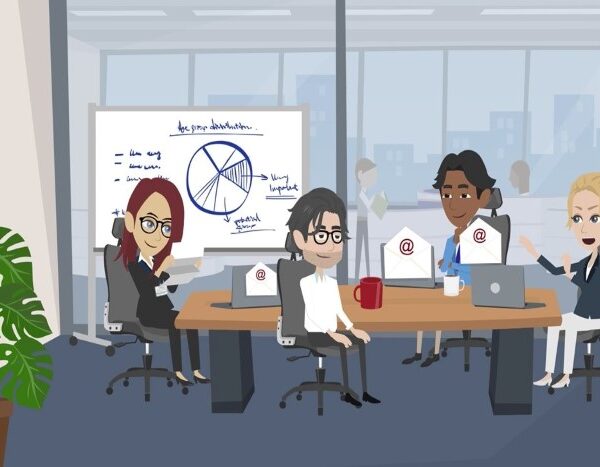Internal communications is about sending the right message to the right audience at the right time using the most appropriate channels, with a success measurement plan in place. Most importantly it is about engaging with employees and forging robust bonds by delivering the right content that addresses their information requirements, enabling them to carry out their job responsibilities efficiently and effectively.
By understanding the information and engagement needs and the content consumption behaviour of different sections of the audience within the collective workforce, you can tailor the communication and its distribution to be assured of significant outcomes.
What is Audience Segmentation?
Audience Segmentation is the process of dividing an audience into smaller groups based on their similar characteristics, wants and needs. It is based on the assumption that the similarity of characteristics influences the extent to which they pay attention, understand and act on a particular message.
This is somewhat similar to marketers building the buyer persona to market their products in a tailored manner. In a similar way, internal communicators map out stakeholder group personas to shape content relevant to them, in a format that is most conducive to gaining attention.
How do you build internal stakeholder personas?
Stakeholder personas (of different audience segments) can be built based on an analysis of onboarding data, survey, observation, interviews and manager focus groups/surveys. There are many ways to segment employees other than by the business division or location which are the most common. The below are a few examples:
Audience Segmentation Categories
- Access to communication channels: E.g., Employees with direct access to computers or internet access and those without them.
- Job type: Employees with similar nature of job role (E.g., IT, HSE).
- Country: Based on specific countries so that message content can be localised or made relevant to topical contexts.
- Location: Front line, on-site, branches across the city, headquarters etc.
- Language: This has specific ramifications while communicating to unskilled workers
- Contract Type: Contract workers, shift workers, remote workers, field workers
- Age group
- Gender: Specific messages related to maternity leave policy, childcare arrangements, gender specific events etc can be tailored and delivered through this segmentation.
- Organisation hierarchy: Frontline workers, Line managers, Senior management, CXO level.
- Membership of social club or cultural groups.
You could also do a broad segmentation of the audience based on their position in the organisation structure.
1. Frontline workers: This group has the most direct communication with customers and being the face of the brand they have significant potential to influence customer experience and relationships. Moreover, they are also the best resource to understand customer feedback and market pulse. But unfortunately they are often neglected probably because they are the most difficult to reach due to them being away from the headquarter building or geographically dispersed, often operating within their own ecosystems and cultures, making it hard for the communication team to establish continuous contact.
2. Line managers: As employees’ desired channel of communication, line managers are important conduits for cascading key messages, helping to make messages relatable to the specific areas of responsibility of an employee. Thus they help to add relevance at the individual level to key messages. They are also important sources of upward feedback from employees, providing management with valuable insights which often influence strategic decision-making.
3. Senior Managers/Directors/VPs: This constitutes the level below the CXO’s, and they are an important link between organisational strategy and operations. They help to clarify and provide line managers with a rationale behind organisation strategy and the top line deliverables. They also participate in strong and frequent interaction with their peers, communicating horizontally for alignment on key initiatives which in turn facilitates cross-departmental collaboration.
4. CXO level/Board: This group consists of the C-Suite and Board of Directors, who are the key decision makers in organisations. They determine the organisation’s direction and strategy and help establish a shared purpose, communicate the vision, and define and communicate core values of the organisation to all other stakeholders.
Stakeholder group analysis
Once the audience segments/groups are identified, a deep dive into each group can be done to analyse the individual stakeholder groups based on their specific traits, demographics and psychographics to determine the factors that will help mould specific communication pieces/activity to render the maximum desired impact.
The below is an example of stakeholder analysis of frontline employees that we conducted recently for an organisation.
 As can be seen from the above, by identifying the preferences of stakeholder groups (Eg: desires, knowledge level, challenges etc), communicators are able to reach the different stakeholders in creative and more meaningful ways that are relevant to them, and addresses their specific requirements through their preferred internal communication channels.
As can be seen from the above, by identifying the preferences of stakeholder groups (Eg: desires, knowledge level, challenges etc), communicators are able to reach the different stakeholders in creative and more meaningful ways that are relevant to them, and addresses their specific requirements through their preferred internal communication channels.
After stakeholder analysis, what next?
Once the audience groups are identified and analyses, the next step is to categorise them in terms of their level of engagement and influence, and map out an action plan specific to different audiences. This will help to leverage on specific audience characteristics while helping to shape our communication tactics.
Mendelow’s Power Vs Interest Matrix
Mendelow (1991) suggests that we analyse our stakeholder groups based on Power (the ability to influence our organisation strategy or project resources) and Interest (their interest in the organisation or in a particular project). All stakeholders may seem to have significant power and we also hope that they would have high interest, but relatively speaking, some stakeholders will hold more Power than others, and some stakeholders will have more Interest. For example, in a construction environment, it is possible that the Real Estate Project Team might have high Power and high Interest in the sustainability goals of the organisation whereas the Technical Team might have low Power with low or high Interest. Therefore, while rolling out an employee environmental sustainability campaign it would be worth to include additional focused ways in which the latter can be engaged.
Ensure that you do a stakeholder mapping early on and analyse all stakeholders/audience groups who would impact your business strategy, internal communication campaigns or new initiatives before commencing a project. By creating a Mendelow’s Matrix, you can easily identify your priority stakeholder audiences and therefore develop a plan to manage communications while keeping all stakeholder/audience groups satisfied.
How To create a Grid Map of Stakeholders
This is based on a 4 point ‘Power-Interest grid’, and allows us to identify which stakeholders are incredibly important, with those in the High Power and High Interest group to be managed closely. In parallel, those stakeholders with low Power and low Interest will need to be monitored with minimum effort expended in terms of time and money. The other two quadrants highlight stakeholders that need to be kept satisfied (high Power, low Interest) and those that need to be kept informed (Low Power, high Interest).
How does the grid affect the communication plan?
The position that you allocate to a stakeholder on the grid shows you the actions you need to take in relation to them while rolling out any communication:
High Power, High Interest (Manage Closely): Aim to fully engage this group, making the greatest efforts to make them happy and to work with them. These are the key players.
High Power, Low Interest (Keep Satisfied): Put just enough work with this group to keep them satisfied and engaged. Not more, not less.
Low Power, High Interest (Keep Informed): Adequately inform this group to maintain their interest and to ensure buy in. This audience can help to give a heads up on potential issues and also highlight areas that could be improved or have been overlooked.
Low Power, Low Interest (Monitor): This would be where you need to put minimum effort. Monitor them to see if their levels of interest or power change.
By segmenting the audience, understanding the requirements and challenges of each audience group and by pinning down the nature/level of communication engagement required for each group, we can be assured of a fool-proof base that supports the internal communication strategy. It helps you to refrain from telling everyone everything to telling specific groups of people what they need or want to know in a way that appeals to them. It is also important to remember that changes within an organisation can cause internal audiences to move across the four quadrants of the stakeholder grid. So, it’s always a good idea to double check the grid maps at intervals to ensure they are relevant to the current state of the organisation.
Want to outsource your internal communications?
For internal communication outsourcing and support, please reach out to:
Email: info@commsimpact.ae / WhatsApp: 052 530 8771






